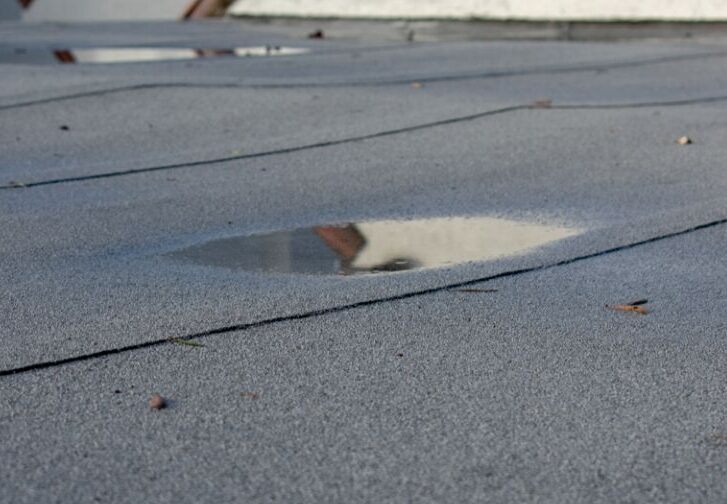


Water ponding on a flat roof can be caused by various factors, including incorrectly designed roof falls and inadequate slope, deteriorating materials that cause roof drooping, drainage concerns, and silt buildup on the roof surface. The remedy must eliminate the source of the ponding to prevent the problem from recurring and inflicting significant damage to the roof or structure. Contact a professional roofer as soon as you see ponding so that repairs may begin immediately.
Some common sources of ponding are;
If you've ever lived in a new house, you've undoubtedly heard a tiny creaking - the sound of the structure gradually settling into its foundation. Settling is a natural process in which your home or structure lowers into the earth over time. This happens in every structure and normally does not result in severe harm. Large commercial buildings, on the other hand, go through the same process, and if they have a flat roof, this might result in low areas appearing in some circumstances. This is especially common in structures with concrete foundations; when the concrete fractures and settles, portions of the building may become minutely lower than others, resulting in small low regions of the roof.
While we may perceive the ground as a picture-perfect immovable object, this is not the reality. As the seasons change, the earth expands and contracts, which can contribute to the natural settling process that every construction goes through. Even prolonged rain can induce soil expansion, affecting the foundation of a building. Not to mention the most significant earth change of all - earthquakes. An earthquake can induce a catastrophic "settling" of a building or possibly force elements of the building's structure to collapse, resulting in low places in the roof.
Every roof has insulation, and if that insulation is inadequately protected from the environment or endures great compression, the structure of the insulation is jeopardized. A leak is a frequent cause of this; water enters the insulation through a hole in the roofing material and saturates the insulation. This thicker insulation deteriorates and sags, resulting in a low point in the roof. A similar issue is caused by compressed insulation, which happens when heavy machinery effectively destroys the insulation.
Unfortunately, low areas are frequently caused by a simple problem such as insufficient or clogged drainage. If your roof lacks a functioning drainage system, including working gutters, rainwater will have nowhere to go when it rains. If you allow water to rest on your roof for a few days, it might produce a little depression in the roof. It's simple - you've created a roof slope that will worsen with each storm. Even if the drainage system is fixed, water will pool in that low spot every time it rains.
Depending on your roofing requirements, our skilled team can assist you throughout the process; please get in touch with us at 366 Grand Street Williamsburg, NY 11211 (718) 690-7084 https://www.williamsburgroofingny.com
